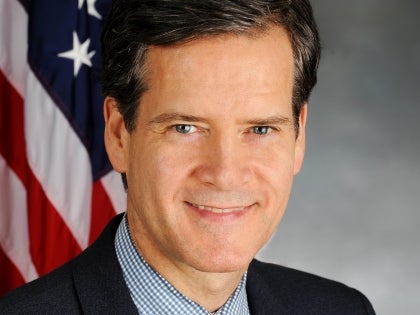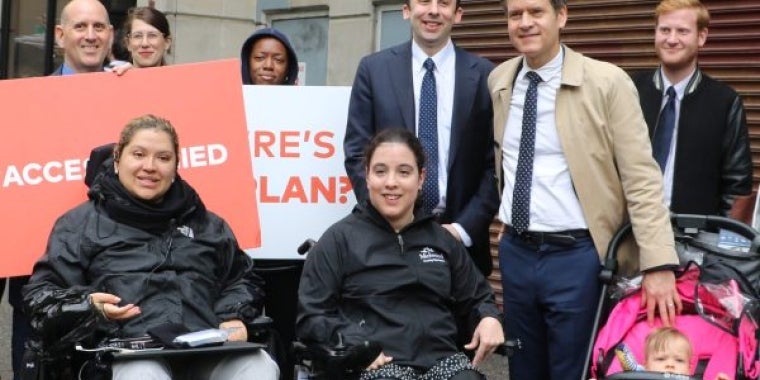
Disability Advocates Rally for Subway Accessibility

Assembly Member Harvey Epstein, City Council Member Keith Powers and State Senator Brad Hoylman (along with Hoylman’s daughter Lucy) rallied with disability advocates for more accessibility in the MTA last week.
Disability advocates and elected officials braved the rain last Thursday to demand that the MTA increase accessibility in the system during the L train shutdown. The advocates and politicians met in front of the Third Avenue L station, one of the stops being closed during the shutdown that won’t be getting an elevator and which is currently inaccessible.
“New Yorkers who depend on mass transit are being locked out,” State Senator Brad Hoylman said. “Less than a quarter of the stations have elevators and on a good day, 10 percent of those aren’t working. We need to tell the MTA to do better.”
Hoylman brought his young daughter Lucy in her strolled to help demonstrate that parents, as well as people with mobility challenges, are often affected by the lack of elevators in the system.
“Think of the lack of vision that the MTA is demonstrating by trying to fix stations with new lights and paint,” Hoylman said, referring to recent station improvements the agency has done throughout the system. “That’s like putting down new carpet when you don’t have a roof.”
Chris Pangilinan, program director at Transit Center, pointed out that while 14th Street is the widest thoroughfare in Manhattan, only two of the L stations currently have elevators.
“You have to go 20 blocks north or all the way down to Houston to find stations with elevators,” he said. “The entire area is inaccessible.”
MTA spokesperson Andrei Berman told Town & Village that New York City Transit President Andy Byford will be announcing a corporate plan later this month that will include additional information about a plan to improve accessibility.
“Accessibility improvements are planned at many stations during the L tunnel reconstruction, including new elevators at two stations,” Berman said, referring to the new elevators being installed at Avenue A for the First Avenue station and at the Bedford Avenue stop. “Meanwhile a separate, billion-dollar program to install elevators at more stations is underway, as is a system wide study to determine the feasibility of making the entire system accessible.”
The MTA has often pointed to the prohibitive cost of elevators as an impediment for increasing the number of accessible stations, although the agency does not currently have estimates on the exact cost for installing additional elevators. Berman added that cost is one of the topics being studied in the system-wide review.
Although it won’t be included during the L train shutdown, the agency did also recently approve an amendment to the 2015-2019 capital plan that includes $200 million for “accessibility enhancements” such as elevators. Seventeen additional stations, including First and Bedford Avenues, will be getting improvements to become fully ADA-accessible through the capital plan, in addition to the work that will be done through the plan amendment. There is not a finalized list of stations that will get the improvements but the MTA estimates that up to five stations will be affected.
“The MTA has a long history of overlooking people with disabilities and families with young children,” said Dustin Jones, a board member of the Center for Independence of the Disable New York. “Access to the subway is pretty much a civil right. What we want is more elevators and proper maintenance on the ones that we already have.”
Advertisements

